
© Johan Persson / RBS. (Click image for larger version)
Royal Ballet School
Les Sylphides, Here We Come, Onwards, Swan Lake pas de quatre, Echad Mi Yodea, The Conservatory, Solo, See Blue Through, Concerto, Grand Défilé
★★★★✰
London, Royal Opera House
9 July 2017, matinee
www.royalballetschool.org.uk
Why open a showcase for ballet students with Les Sylphides? One reason is that it links youngsters into British ballet history: Alicia Markova, Britain’s first internationally famous ballerina, learnt it with the Ballets Russes from the choreographer, Mikhail Fokine (and the slow pace she insisted he wanted has put audiences to sleep ever since). Les Sylphides used to be performed so regularly that Louis MacNeice wrote a poem about it in 1939: ‘Life in a day: he took his girl to the ballet’.
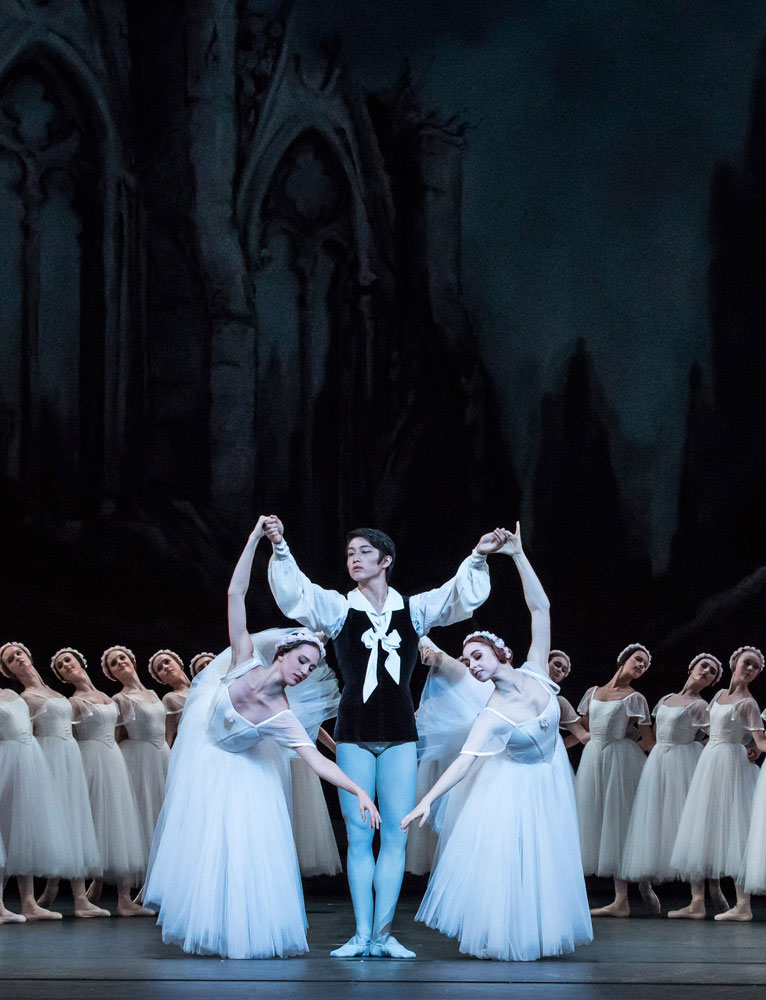
© Johan Persson / RBS. (Click image for larger version)
Another good reason is that learning and performing Les Sylphides is a baptism in the Romantic style and in unison discipline for the female corps de ballet. But it’s a tough ask for adolescent girls with still gawky arms and for a solitary young man posing dreamily as a poet.
The ‘romantic reverie’ was dutifully and sensitively danced, with Haoliang Feng as the Poet, Nadia Mullova-Barley as the Prelude and pas de deux dancer, and Sae Maeda and Ellie Young in the waltz and mazurka solos. Maeda was outstanding for her joyous response to the music’s phrasing, a pleasure to watch each time she appeared on stage, floating like a butterfly.

© Johan Persson / RBS. (Click image for larger version)
Boys from White Lodge Years 10 and 11 kept neatly in line in sailor suits to Morton Gould’s military marches. Here We Come was choreographed in 1978 by Erik Bruhn for National Ballet of Canada students. He cleverly made use of angular elbows and youthful exuberance, while maintaining the strictness of drill. The boys had to move fast into their formations, with the fleet footwork of Bruhn’s Danish training. 15-year-old Daichi Ikarashi performed his solo with the panache of a technical prodigy confident that his leaps and multiple turns would be secure. Archie Sherman was similarly assured in his sassy tango.
Jonathan Watkins, who won a choreography award when he was a Royal Ballet School student, was commissioned to create an ensemble work for 1st year Upper School Students. To music by contemporary composer Benjamin Ellin, he moved his cast of 14 girls and boys in ever-changing clusters, adding height to the groupings with flying lifts. Pas de deux were brief, the pairings soon swept into the busy journey of Onwards into the future.
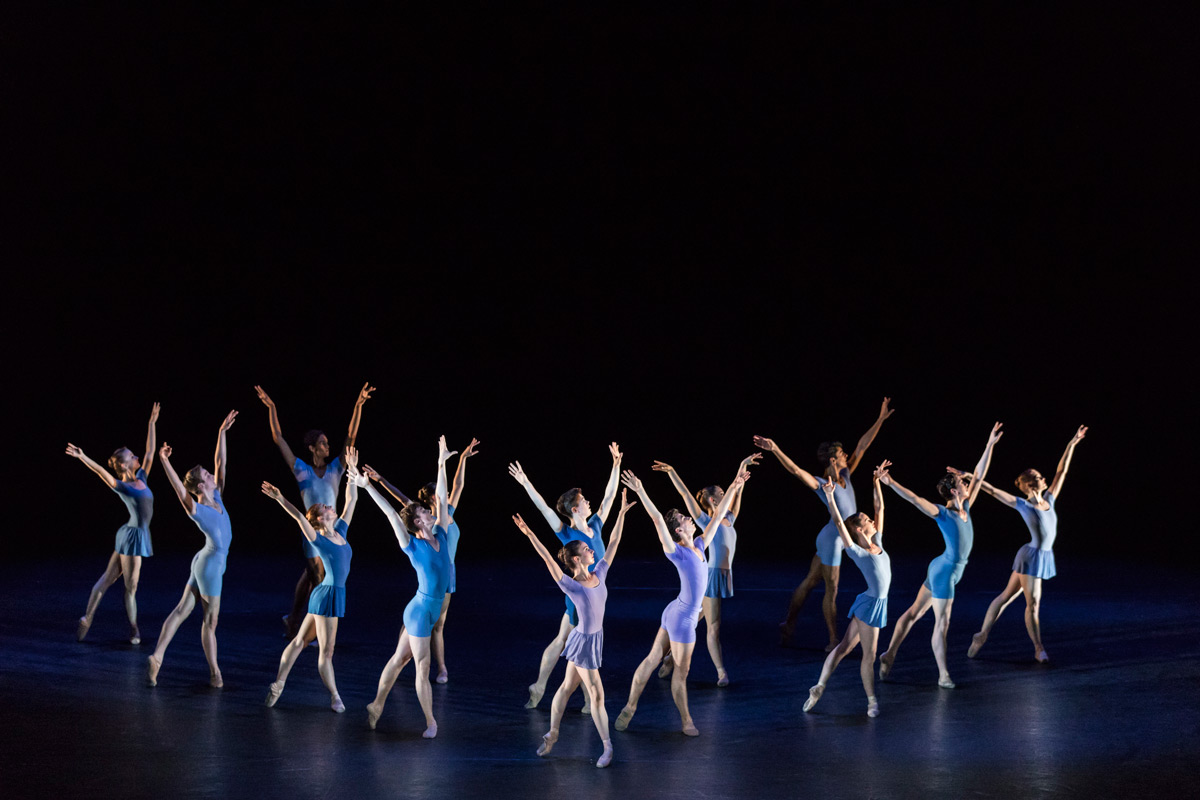
© Johan Persson / RBS. (Click image for larger version)
Before the next ensemble piece for older Upper School students came a bonus addition, Frederick Ashton’s 1971 pas de quatre from Act III of Swan Lake. Coached by Merle Park and Anthony Dowell, Yu Kurihara, Amelia Townsend, Eli Gruska and Harrison Lee (all 2nd years) accomplished the demanding choreography with blithe assurance. One can only wonder whether professional company members can still dance Ashton at his quirkiest so speedily and stylishly.
Ohad Naharin’s popular chair piece, Echad Mi Yodea, involved 19 Upper School students, identically dressed in black suits, arrayed in a semi-circle. To a traditional Hebrew counting song (music rousingly performed by The Tractors Revenge), they rose and sank down, removing their hats and clothes in ritual order and flinging them into the centre. The cumulative effect was thrilling and alarming, as a man at the end of the line repeatedly fell face down. He always regained his seat, however – an assurance that he and his people would survive.

© Johan Persson / RBS. (Click image for larger version)
Echad Mi Yodea made a resounding close to the first half of the long programme. The interval was kept short, frustratingly so for audience members’ reunions in the refreshment areas. The curtains rose again on a dance studio set for August Bournonville’s Konservatoriet (The Conservatory or Dancing School). Part of a longer 1849 ballet for the Royal Danish Ballet, it features students of all ages and heights. Tall Australian Brayden Gallucci as the Ballet Master demonstrated to perfection what he required from his charges (including a child with the enchanting name of Lotti Bunney).
Bournonville’s deceptively modest choreographic style is a challenge for dancers not trained in his technique. Diana Cuni Mancini, formerly a soloist with the Danish Royal Ballet, coached the students from White Lodge and 1st year of the Upper School to present themselves with ease, as if their intricate batterie was no effort at all. The star pupils, Emily Hoff and Ginevra Zambon, raised their legs à la seconde higher than Bournonville would have approved, but that’s what today’s dancers do.

© Johan Persson / RBS. (Click image for larger version)
In honour of Dutch choreographer Hans van Manen’s 85th birthday, three young men performed his 1997 Solo. Jerome Barnes, Joshua Junker and Augustus Payne followed each other in quick succession, each asserting their individuality through van Manen’s emphatic gestures, spins and leaps. The male contingent in the school is particularly strong at present, both from within the RBS training system and from schools in other countries, most of them prize-winners.
The graduate boys were followed by a 2nd year couple, Katharina Nikelski and Harris Bell, in a pas de deux from Didy Veldman’s See BlueThrough . The complete work for seven dancers, made for Ballet Gulbenkian in 2001, has also been in Phoenix Dance Theatre’s repertoire. An overhead structure of mirrored panels is meant to reflect the broken surface of the sea; the performers are inhabitants of an undersea world. Since the choreography involves elastic clothing – the woman enveloped in her partner’s T-shirt, he hanging onto her tunic – the clingy duet resembled a stifling relationship: inexplicable out of context.

© Johan Persson / RBS. (Click image for larger version)
The last work before the final Grand Défilé was Kenneth MacMilllan’s Concerto to Shostakovich’s Piano Concerto no 2. Created in 1966 for the Deutsche Oper Ballet in Berlin, MacMillan used Shostakovich’s marching rhythms for mock-militaristic drill for the corps de ballet. He contrasted their exertions with the hushed reverence of the pas de deux in the second movement, beautifully sustained by long-legged Yu Hang with Nicholas Landon as her attentive partner.
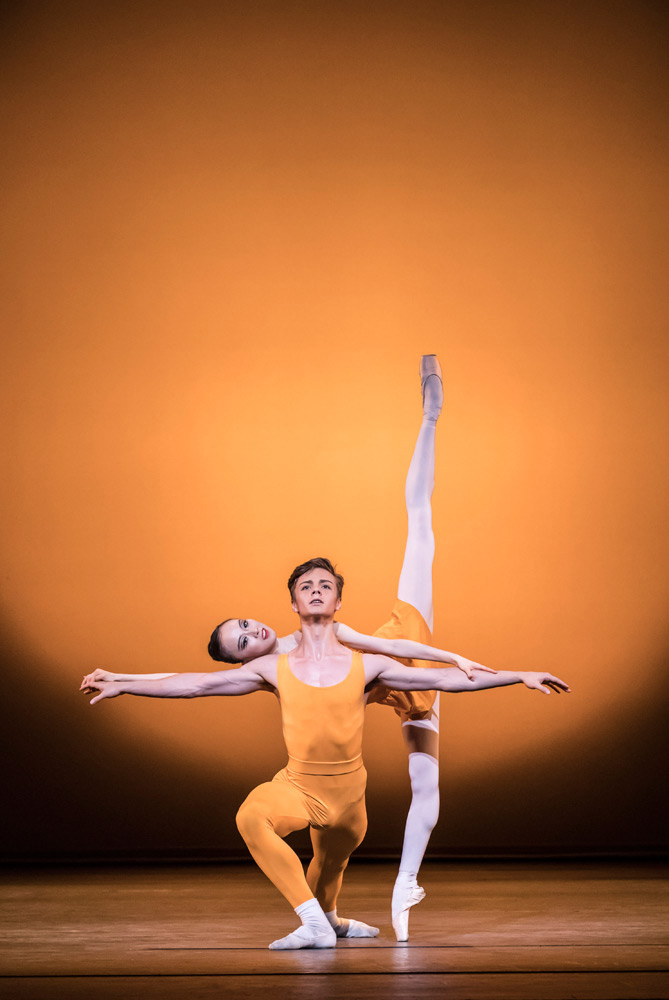
© Johan Persson / RBS. (Click image for larger version)
Sae Maeda and Harrison Lee were the sparkling principal couple in the sprightly first movement. Like her, he’s one to watch out for in the future, though he’s still only 2nd year. His multiple turns were a joy, each one distinct instead of blurred in a spin. Tall Nadia Mullova-Barley with her big jump seemed overwhelmed by the tempi of the third movement. (The Royal Ballet Sinfonia was conducted by Paul Murphy.)
The Grand Défilé was as moving as ever, with colour-coded youngsters bursting onto the stage until it filled with excited energy as they all lined up precisely, feet crossed in perfect fifth positions.
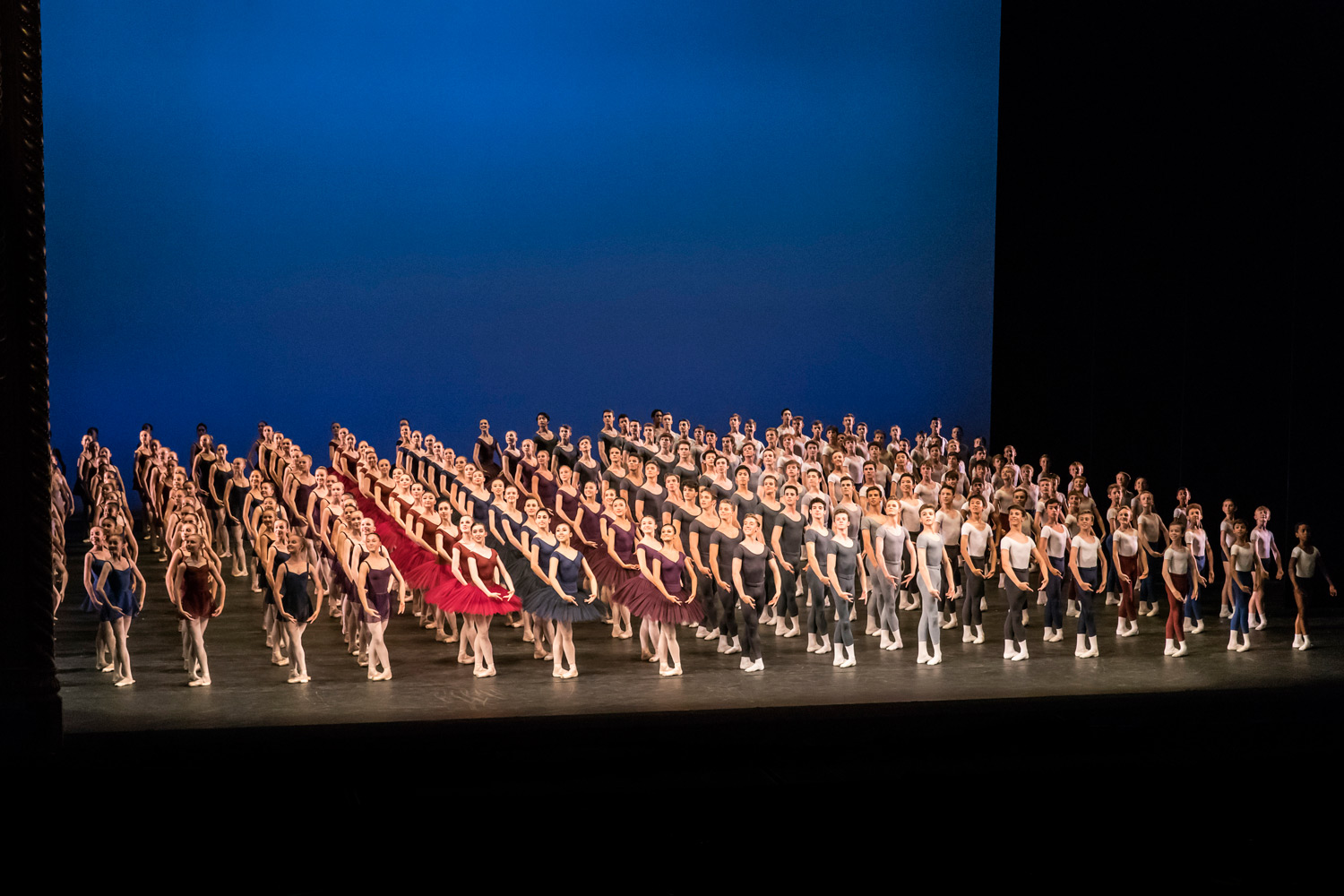
© Johan Persson / RBS. (Click image for larger version)
It was a well-balanced programme, featuring different kinds of discipline for future corps de ballet dancers, and honouring veteran choreographers as well as contemporary ones. The emphasis on neat, speedy footwork seems a welcome sign that Christopher Powney, the School’s director, and his staff are returning to the principles of Ninette de Valois and Frederick Ashton, founders of the ‘English style’, rather than emulating Russian bravura technique.
Those joining the Royal Ballet companies are: Joonhyuk Jun, Joshua Junker, Sae Maeda, Nadia Mullover-Barley, Aiden O’Brien and Amelia Palmiero, new members of The Royal Ballet’s Aud Jebsen Young Dancers Programme; Haoliang Feng, Augustus Payne, Harry Wright and Claudia Nicholson join Birmingham Royal Ballet.












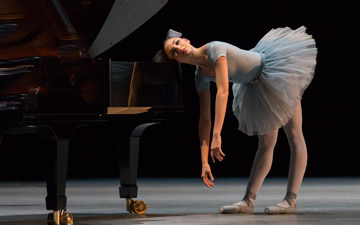

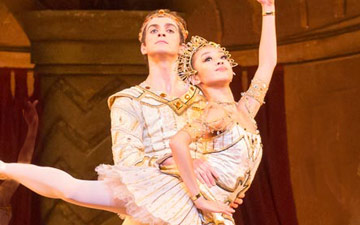
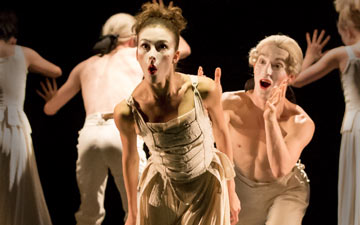
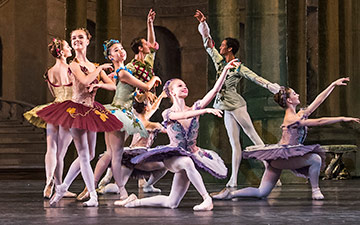
You must be logged in to post a comment.